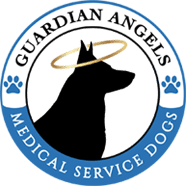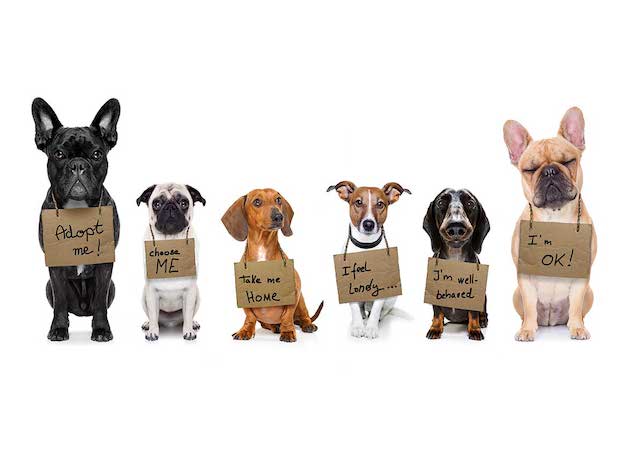When Guardian Angels goes into a shelter, we look for a medium to a large-sized dog because they have to be able to do various tasks, and a small dog is not size appropriate. A correct service dog needs to always have four on the floor to support its recipient, so a larger dog doesn’t get stepped on as easily in a crowd.
Can Smaller Dogs Be Service Dogs?
While many smaller dogs may be smart enough to complete a variety of tasks, they are not large enough to complete tasks such as opening a door or turning on a light. The dog we choose needs to be large enough to perform the tasks as needed.
Why Don’t You Choose Puppies From the Shelter?
We do not choose to adopt puppies for service dog training because they are already very adoptable. They are cute; they kiss your face and are always wagging their tail. People want to adopt puppies, so we know they will find a home. Typically, with a puppy from the shelter, we have no history of the parents. This means we don’t know if the puppy’s parents were scared of everything or aggressive.
An 8-week-old puppy could be just fine, but as the puppy ages, the genetic predispositions they have will begin to show and may not be what we need for our program.
What Age Dog Do You Look for at the Shelter?
We look for dogs who are medium to large size and anywhere from 10 months to two years old. This is a good age to choose a dog and to see what their temperament might be like. We have a much better idea of what their personality is like at that point in their development. Additionally, dogs in this age range are less adoptable, so we are more than happy to adopt these dogs if they have the right tendencies to be successful in our program.
Evaluating the Dogs at the Shelter
It’s important to remember that when you are looking at a dog in a shelter situation, this is not where they have spent their life, and they are likely out of sorts. They will take on a pack behavior, barking and carrying on like the other dogs. While we view them in the shelter, we have to rule out some of the undesirable behaviors as being part of the pack mentality at that time.
Once we see a dog that meets our criteria with size and age, we will go up to the dog’s kennel, talk to them softly, and see if they approach us and wag their tail or if they go into the corner to avoid us, shiver and shake. The dogs that are willing to make an attempt to make friends with us are the dogs we pull out. We take them outside of the shelter because we don’t want them to be intimidated by any of the behaviors that are taking place inside of the shelter.
Once outside, we offer them treats and play ball to see if they have any food motivation or play drive. We also check to see if we can handle them all over, handle their feet and touch their tail without them being upset by it.
It’s very important that they trust us and are willing to be handled without snapping or getting upset in any way. If they do, they would probably not be comfortable or trustworthy in a public or a family situation with a recipient. We would not choose this dog.
We look at the drive through food or a toy to see if the dog is going to focus on our attempt at interaction. If so, then this dog may focus on potentially learning to do tasks and training. Or, has he just got his nose to the ground not paying any attention to us while doing their own thing. If there is no connection with us, then he/she will not be a candidate for our program.
What Breeds Do You Look for in the Shelter?
There are certain breeds that are better for the work that we do versus others. When you look at purebred dogs, you have to look at what they were originally bred to do.
We look at the structure. We examine the dog to ensure they are properly put together and can move with ease. If we see signs of bad hips or no angulation, chances are the dog is going to struggle physically and won’t have as long of a work life due to impending skeletal issues as they age, and they would age out too soon.
We look for dogs that have the right temperament, are mentally and physically sound, and can help a person with their disability for many years to come.
Help Us in our Mission to Heal!
Your generous donations help us continue our mission of pairing those in need with our incredible service dogs. Donate to our mission today and help unleash the power to heal!





